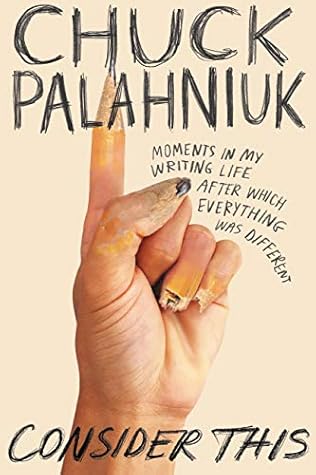More on this book
Community
Kindle Notes & Highlights
Read between
February 5 - February 29, 2020
A book every year, I got it. The die was cast.
Bob knew his business, and being an author is nothing if not a small business.
The city once contacted me to request an inventory of my existing stock. I explained I was a writer, and my stock was ideas. The city asked if I had any pens or pencils on my desk. Yeah, I told them. They said I needed to count any pens and pencils lying...
This highlight has been truncated due to consecutive passage length restrictions.
“And another thing,” he cautioned me, “don’t use a lot of commas. People hate sentences with lots of commas. Keep your sentences ...
This highlight has been truncated due to consecutive passage length restrictions.
But to always keep changing, varying, evolving the stream of information so it seems fresh and immediate and keeps the reader hooked.
Using all three forms of communication creates a natural, conversational style. Description combined with occasional instruction, and punctuated with sound effects or exclamations: It’s how people talk.
Everyone should use three types of communication. Three parts description. Two parts instruction. One part onomatopoeia. Mix to taste.
Ideally, you should be combining gesture, action, and expression with your dialogue. First,
Create tension by pitting your character’s gestures against his or her words. Your characters have arms and legs and faces. Use them. Use attribution. Control the delivery of dialogue. Support it with actions, or negate it with actions. Above all, do not confuse your reader by leaving it unclear who’s saying what.
That reminds me—my Italian editor, Eduardo, once took me to see Leonardo da Vinci’s painting The Last Supper in Milan. You have to make a special appointment. You enter the everything-controlled room through an air lock, and get fifteen minutes to look before you’re ushered out. And in that quick visit I saw how the picture is really a catalog of gesture. The body language transcends Italian or English. Honestly, all the emoticons are there in one painting.
As Tom Spanbauer always taught us, “Language is not our first language.”
If you were my student, I’d make you create a list of all the quick wordless gestures you use every day. The thumbs-up. The thumb-and-index finger “okay” sign. Knocking your fist lightly on your forehead to “recall” something. Clutching your heart. The hitchhiker’s thumb, which implies “get lost.” The index finger held vertically against the lips for “hush up.” The hooked “come here” finger. I’d make you list at least fifty hand signals. That way you’d always, always be aware of the variety of gestures you can insert into dialogue.
people filled that pause by saying, “It must be seven minutes past the hour.” Superstition held that Abraham Lincoln and Jesus Christ had both died at seven minutes past the hour, so humanity would always also fall silent to honor them at that moment.
Films can cut or dissolve or fade to. Comics simply move from panel to panel. But in prose, how do you resolve one aspect of the story and begin the next?
it also calls up a past event. Our superstition about “seven minutes past the hour” served to reinforce our mutual identity as Christians and Americans. I’d wager that most cultures have a similar device that arises from their history.
We’d sit like dumb rocks through Bonanza, but the moment a douche commercial sprang up on the screen, everyone yakked like magpies to distract each other.
During meals if someone had a bit of food on his chin, someone else would touch that spot on her own face and say, “You have a gazelle out of the park.” On road trips, if someone needed to find a toilet, he’d say, “I have a turtle’s head poking out.”
If you were my student I’d tell you to make a list of such placeholders. Find them in your own life. And find them in other languages, and among people in other cultures. Use them in your fiction. Cut fiction like film.


